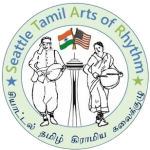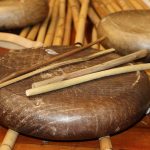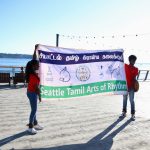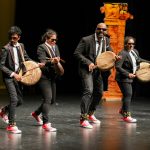Parai பறை
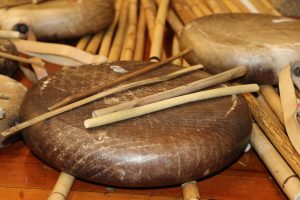
It is one of the earliest instruments to date, Parai, means “to speak or to communicate”. The instrument dates back to prehistoric times, being the oldest drum in Indian history. It was referred to in a 2nd century BCE Tamil book of the Sangam period, Tholakaapiam, which stated it was a standard musical instrument for many occasions. In the beginning, humans lived in caves in hills as hunters and gatherers.
Parai was invented from the excess hide from hunting carcasses and used for the percussion instrument. It was used to signal people to gather, alert them to upcoming wars, announce victory or defeat, warn wild animals about human presence, during festivals, weddings, and other celebrations. As the Tamil civilization progressed, the creation of the drums changed to stretched cowhide, neem wood, and the two sticks. These two sticks vary in size and thickness; the Adi Kuchi (smaller stick) is thicker and short, whereas the Sundu Kucchi (larger stick) is thinner and long. The position of holding the Parai is crucial to achieve the desired rhythmic patterns; this can be only attained by placing the Adi Kuchi in the “dominant hand” on the bottom and the Sundu Kuchi in the “weak hand” on the top of the Parai, while resting it on the hip with help with of the “weak hand”. In the modern world, it is mainly used in wedding dances, sports events, and to summon deities in temples. Among the people of Tamil Nadu, Parai holds significant importance and is highly regarded. It is an artifact that has sustained through the progression of the human civilization.
STAR takes pride in spreading the interest and awareness of the art form thus propagating the Tamil culture. STAR parai team consists of men, women, teens and young children. STAR has collaborated with various masters of the art form and conducted several demonstrations and lecture demonstrations to audiences across the Pacific northwest. STAR regularly performs in cultural festivals and is invited to play on auspicious days in the temples. STAR also cares for the children of the Parai artists in India and fundraises to educate them.
